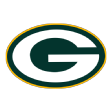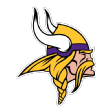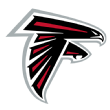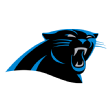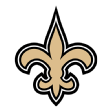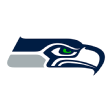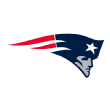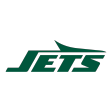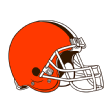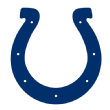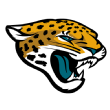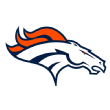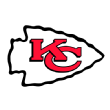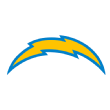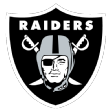32 NFL one-hit wonders: Hillis' Madden cover, Tyree's helmet catch, more

Remember Jonas Gray's legendary four-touchdown Sunday night against the Colts? What about Peyton Hillis' run to the cover of Madden NFL 12? Or maybe Chris Matthews' come-from-nowhere game in Super Bowl XLIX?
We asked our NFL Nation reporters to pick the greatest one-hit wonders in the history of the teams they cover, the players who broke out in a big way ... and faded away just as quickly. These are the 32 players who had one great game or season and never made a big impact in the NFL again.
Jump to:
ARI | ATL | BAL | BUF | CAR | CHI | CIN
CLE | DAL | DEN | DET | GB | HOU | IND
JAX | KC | LAC | LAR | MIA | MIN | NE
NO | NYG | NYJ | OAK | PHI | PIT | SF
SEA | TB | TEN | WSH
NFC EAST
Dallas Cowboys
QB Clint Longley, Nov. 28, 1974
What happened: In a must-win game against the Redskins on Thanksgiving, the Cowboys trailed 16-3 when quarterback Roger Staubach was knocked out with an injury in the third quarter. Longley, a rookie, had not thrown a pass in a game but completed 11 of 20 throws for 203 yards and two touchdowns, including a 50-yarder to Drew Pearson with 28 seconds to play for a 24-23 win.
The aftermath: Longley threw only 24 passes in five more appearances with the Cowboys and was traded to San Diego after he sucker-punched Staubach during the 1976 preseason. You don't do that to Captain America, who called it a "gutless punch." The good news? The Cowboys used parts of that trade to land the No. 2 pick in 1977. They selected running back Tony Dorsett. -- Todd Archer
New York Giants
WR David Tyree, Feb. 3, 2008
What happened: Everyone knows "The Helmet Catch" that helped the Giants win Super Bowl XLII. It was one of only 58 receptions in five seasons (regular season and playoffs) with the Giants for Tyree, who was a special-teams ace. But along with the improbable grab that he pinned against his lid, Tyree -- who admitted to dropping everything at practice during the week -- caught a 5-yard, fourth-quarter score in that Super Bowl.
The aftermath: It turned out that the Super Bowl was also the final game Tyree played for the Giants. He missed the 2008 season with an injury and appeared in 10 games for the Ravens in 2009. He's currently working for the Giants as director of player development. -- Jordan Raanan
Philadelphia Eagles
QB A.J. Feeley, 4-1 stretch as starter in 2002
What happened: Feeley was the team's third-string quarterback in 2002 before injuries to Donovan McNabb and Koy Detmer thrust him into action for the stretch run. He responded by guiding the team to four consecutive victories, saving the season and securing the No. 1 seed in the NFC playoffs before McNabb's return.
The aftermath: The Eagles traded him to the Dolphins for a second-round pick after the 2003 season. Feeley started eight games during his lone season in Miami, where he threw 11 touchdown passes and 15 interceptions. He returned to Philadelphia as a backup in 2006 and 2007 before ending his career with the St. Louis Rams in 2011. But after that magical 2002 run, he went 4-9 as a starter. -- Tim McManus
Washington Redskins
RB Timmy Smith, Jan. 31, 1988
What happened: Redskins coach Joe Gibbs decided -- after previous solid showings in playoff games -- on the morning of Super Bowl XXII, to name Smith a starter. But no one told the young running back, fearing the pressure could overwhelm him. It worked out. Smith rushed for a Super Bowl-record 204 yards and two touchdowns in a 42-10 win against the Broncos.
The aftermath: His huge game on the biggest stage should have launched Smith into stardom. However, he managed only a combined 476 yards in two more NFL seasons before off-field issues cost him his career. -- John Keim
NFC NORTH
Chicago Bears
RB Rashaan Salaam, 10-TD rookie season in 1995
What happened: A Heisman Trophy winner at Colorado, Salaam was taken in the first round (21st overall) of the 1995 draft by the Bears. As a rookie, he rushed for 1,074 yards and 10 touchdowns and appeared ready to be Chicago's starting running back for many years to come.
The aftermath: After his rookie breakout, Salaam failed to rush for 500 yards the next season and was out of Chicago after the 1997 season. Salaam was out of the league for good after he appeared in two games for the Browns in 1999. Tragically, Salaam took his own life in 2016 at age 42.-- Jeff Dickerson
Detroit Lions
TE Joseph Fauria, 7-TD rookie season in 2013
What happened: The undrafted rookie from UCLA was a red zone star his first season in the league, catching seven touchdown passes -- including three against the Browns -- despite collecting just 18 receptions for 207 yards. While he emerged as a big target for Matthew Stafford that season, his celebratory dance moves, before the NFL relaxed its celebration rules, got him noticed by Jimmy Fallon.
The aftermath: Fauria suffered an off-field ankle injury during the 2014 season -- initially claiming he tripped over his dog, Lil Rufio, while the dog was relieving himself. Fauria actually injured the ankle while playing volleyball. He was eventually placed on injured reserve before being cut in 2015, after which he tried to latch on with the Cardinals, the Patriots and the Alliance of American Football's Arizona Hotshots, to no avail. Fauria has hosted a podcast and is trying to make a career in comedy and acting. -- Michael Rothstein
Green Bay Packers
WR Jeff Janis, Jan. 16, 2016
What happened: Janis had two catches during the entire 2015 regular season before his seven-catch, 145-yard, two-touchdown game in the divisional round of the playoffs at Arizona. It included a 41-yard Hail Mary touchdown to force overtime.
The aftermath: Those who thought it would springboard Janis to a bigger role could not have been more wrong. Janis caught just 13 passes the next two seasons combined, including just two for 12 yards during the entire 2017 campaign. He signed with the Browns the following offseason but never played in another game, for them or anyone else. -- Rob Demovsky
Minnesota Vikings
S Brian Russell, 9-INT season in 2003
What happened: Russell went from a practice-squad safety who joined the Vikings as an undrafted free agent in 2002 to leading the NFL in interceptions. He had an interception in the first six games of the 2003 season and finished with nine. With teammate Corey Chavous snagging eight picks in the same season, the Vikings boasted one of the league's top safety duos.
The aftermath: Russell was moved to free safety in 2004 and recorded two interceptions, one in the regular season and another in the playoffs. He signed with Cleveland in 2005 and notched three more. Russell played for five teams in his nine-year career. -- Courtney Cronin
NFC SOUTH
Atlanta Falcons
WR Quentin McCord, Dec. 22, 2002
What happened: McCord, a seventh-round draft pick out of Kentucky in 2001, caught seven passes for 182 yards and a touchdown in a 36-15 victory over the Lions -- and he didn't even start. "I thought, dang, this kid could be pretty good," fellow receiver Brian Finneran said. "I thought that was his coming-out party and that he could play in the league for a while."
The aftermath: McCord had just 23 catches for 427 yards and that one score in 25 career NFL games, all with the Falcons. McCord spent a season on the Raiders' practice squad (2004), had a cup of coffee with the Arena Football League's Georgia Force, then played with Winnipeg and Edmonton in the Canadian Football League. He last was with the Kentucky Horsemen of the AFL's developmental league (2009) in the same city where he played his college ball. -- Vaughn McClure
Carolina Panthers
RB Nick Goings, 7-TD season in 2004
What happened:Goings went from fourth on the running back depth chart to starter in 2004 thanks to injuries. He responded with 821 yards and six rushing touchdowns, plus 45 catches for 394 yards and a score. During an eight-game stretch, he had an NFL-leading five 100-yard rushing games. His three-touchdown, 121-yard rushing performance against Arizona in Week 11 earned him NFC Offensive Player of the Week.
The aftermath: Goings had only 57 carries for 195 yards the next four seasons combined before his career ended after his fourth concussion. He was released in 2009 and, ultimately, is remembered more as a special-teams player. -- David Newton
New Orleans Saints
S Chris Reis, Feb. 7, 2010
What happened: Three of the greatest moments in Saints history involved unheralded special-teams players recovering footballs. None was bigger than Reis coming up with the legendary surprise onside kick to start the second half of Super Bowl XLIV. Reis landed on the ball and, eventually, pulled it out of a chaotic pile -- thanks to a big assist from teammate Jonathan Casillas.
The aftermath: Reis, who went undrafted out of Georgia Tech, spent four seasons with the Saints as a core special-teams player and backup safety. But he appeared in only two more games after his heroic Super Bowl moment, landing on injured reserve with a shoulder injury in 2010. He never played again in the NFL, but his legacy is secure in New Orleans.-- Mike Triplett
Tampa Bay Buccaneers
WR Micheal Spurlock, Dec. 16, 2007
What happened: Spurlock became the first Buccaneer in the franchise's 32-year history to return a kickoff for a touchdown in a regular-season game when he streaked down the sideline in the first quarter of a Week 15 game against the Falcons. Legendary Bucs radio announcer Gene Deckerhoff infamously shouted, "Run, Micheal, run!" while Matt Vasgersian exclaimed on the TV call, "Could it be that the great curse has been lifted?!"
The aftermath: Ironically, after Spurlock was cut and re-signed by the Bucs, he did it again against the Falcons on a squib kick in 2010. He spent the final six seasons of his career (2009-14) with seven teams, including the Bucs. He finished with five combined kick- and punt-return touchdowns. -- Jenna Laine
NFC WEST
Arizona Cardinals
RB LeShon Johnson, Sept. 22, 1996
What happened: A third-round pick by the Packers in 1994, Johnson was claimed off waivers by the Cardinals in 1995, then suffered an injury in training camp in 1996 that lingered until Arizona's Week 4 game against New Orleans. Johnson broke out against the Saints, rushing for 214 yards, which remains the second-best rushing performance in Cardinals history. It was all the more remarkable because he had just 4 rushing yards to that point in the season and hadn't played the week before.
The aftermath: Johnson had a few more good outings that season but never rushed for 100 yards in a game the rest of his career, which was interrupted by a battle with cancer in 1998. He returned to play for the Giants in 1999 but never regained the form or production he had for that brief time in Arizona. -- Josh Weinfuss
Los Angeles Rams
KR Tony Horne, three kickoff-return-TD season in 1999
What happened: Horne, an undrafted free agent from Clemson, was a dynamic kick returner for the Rams 1998-2000. During the 1999 season, which included a victory over the Titans in Super Bowl XXXIV, Horne averaged 29.7 yards per kick return and returned two kickoffs for touchdowns, including one for 101 yards. In a divisional-round win over the Vikings, he returned a kickoff 95 yards for a touchdown to give the Rams a lead they would never relinquish.
The aftermath: Horne returned to the Rams for the 2000 season, averaged 24.2 yards per kick return and had a 103-yard return for a score. After the season, he signed as a restricted free agent with the Chiefs but was released in the preseason. -- Lindsey Thiry
San Francisco 49ers
LB Chris Borland, 107-tackle rookie season in 2014
What happened: Perhaps the only player listed here who made the conscious decision to be one-and-done, Borland walked away from the NFL after a strong rookie season in which he posted 107 tackles, a sack and two interceptions. Borland looked to be next in the Niners' linebacker lineage but cited concerns about potential brain injury when he retired after the season.
The aftermath: The 49ers spent the years after his retirement struggling to replace Borland at inside linebacker, cycling through multiple options, including the ill-fated first-round selection of Reuben Foster. Now, it seems the Niners finally have the combination they want in Kwon Alexander and Fred Warner, while Borland has taken to doing advocate work in a number of important fields. -- Nick Wagoner
Seattle Seahawks
WR Chris Matthews, Feb. 1, 2015
What happened:Matthews came out of nowhere to catch four passes for 109 yards and a touchdown in Super Bowl XLIX against the Patriots in a performance that might have earned him MVP honors had the Seahawks won. Matthews had recovered a crucial onside kick in the NFC title game two weeks earlier, but,before the Super Bowl, the CFL import had yet to catch an NFL pass outside of the preseason.
The aftermath: Matthews made the team the next season, in 2015, but was buried on the depth chart and caught only four passes in nine games before the Seahawks released him. Then-offensive coordinator Darrell Bevell spoke that summer about needing more consistency from Matthews, who finished his career with 16 catches for 176 yards and a touchdown in 22 regular-season games. -- Brady Henderson
AFC EAST
Buffalo Bills
RB Terry Miller, 7-TD rookie season in 1978
What happened: Miller ran for 1,060 yards and seven touchdowns as a rookie in 1978, averaging 4.5 yards per carry as a 16-game starter for Buffalo. His performance ranks 27th in Bills history for rushing yards in a single season.
The aftermath: Miller had just 484 yards and a single score in 16 games the next season before being phased out of the Bills' offense completely in 1980, when rookie Joe Cribbs took over as the team's starting back. -- Marcel Louis-Jacques
Miami Dolphins
RB Lamar Smith, 16-TD season in 2000
What happened: Smith was primarily a backup running back in his first six seasons but was the Dolphins' workhorse in 2000, when he rushed for 1,139 yards and 14 touchdowns in the regular season. He also had one of the best playoff performances in team history that season, rushing for 209 yards on 40 carries in a 23-17 win over Peyton Manning's Colts -- the Dolphins' most recent playoff victory.
The aftermath: Smith was the Dolphins' lead back the next season but averaged just 3.1 yards per carry and would never eclipse 1,000 yards again. He finished his career as a backup in New Orleans in 2003. -- Cameron Wolfe
New England Patriots
RB Jonas Gray, Nov. 16, 2014
What happened: In his fourth career game, Gray rushed for 201 yards and a franchise-record four touchdowns in a 42-20 victory against the Colts. How rare was the accomplishment? It was the first by a player without a previous NFL touchdown since 1921. Gray landed on the cover of Sports Illustrated the next week.
The aftermath: In the days after the game, Gray was late to the facility once and quickly slipped into coach Bill Belichick's doghouse. He finished the season with 412 rushing yards and was released in September 2015. Gray had 45 total carries for the Dolphins and Jaguars in 2015, but he injured his quad and was released by Jacksonville in 2016 and didn't play another down in the NFL. Gray's name was in the pool for the recent XFL draft, but he was not selected.-- Mike Reiss
New York Jets
WR Stephen Hill, Sept. 9, 2012
What happened: Hill, a second-round pick in 2012, had five catches for 89 yards and two touchdowns against the Bills in his first NFL game. The Jets took some heat for drafting Hill, who caught only 49 career passes in Georgia Tech's triple-option offense. New York's top scout had compared him to another Georgia Tech alum, Calvin Johnson. At 6-foot-4, Hill ran a 4.36 40-yard dash at the NFL scouting combine. He lived up to his billing -- for one day.
The aftermath: Hill's deficiencies (shaky hands, poor route running) showed up after he was rushed into the starting lineup out of necessity. He was out of the NFL by 2015. The worst part for the Jets? They traded up for Hill, passing on wide receiver Alshon Jeffery and linebacker Bobby Wagner, among others. -- Rich Cimini
AFC NORTH
Baltimore Ravens
RB Jay Graham, Nov. 16, 1997
What happened: The rookie third-round pick delivered a breakout performance in his first NFL start, gaining 154 yards against the Eagles by using sharp cuts and showing no hesitation. Graham was thrust into the starting lineup before the 10-10 tie after Bam Morris was a late scratch. Graham carried the ball 35 times, the third most in franchise history.
The aftermath: Graham injured his ankle in overtime of that game against the Eagles and was never the same. He played only six more games for Baltimore and gained 123 more yards -- leaving with an injury settlement from the Ravens before their 2000 Super Bowl season because of ankle and knee problems. Graham is one of seven Ravens running backs to eclipse 150 yards rushing in a game but is the only one who failed to do so again. He ended his career with 13 combined carries for the Packers (2001) and Seahawks (2002).-- Jamison Hensley
Cincinnati Bengals
RB Ickey Woods, 15-TD season in 1988
What happened: Woods rushed for 1,066 yards as a rookie, led the NFL in yards per carry (5.3) and was a consensus second-team All-Pro selection. Oh, and don't forget about the Ickey Shuffle. The second-round pick out of UNLV busted out his signature dance often. He scored 15 touchdowns in 1988, the second-highest total in the league that season.
The aftermath: Woods was never the same after he suffered a knee injury in the 1989 preseason. After his rookie season, he played in only 21 games over the next three campaigns. He registered 36 carries during the Bengals' three-win season in 1991 before he retired. -- Ben Baby
Cleveland Browns
RB Peyton Hillis, 13-TD, Madden cover-worthy season in 2010
What happened: Traded from Denver for just a sixth-round pick and reserve quarterback Brady Quinn, Hillis exploded out of nowhere in Week 3 of the 2010 season after an injury to starting running back Jerome Harrison. The former fullback rushed for 144 yards and caught seven passes to take over as Cleveland's primary ball carrier. He went on to finish with 1,654 yards rushing and receiving on the season. After his breakout, Hillis remarkably appeared on the cover of the Madden NFL 12 video game via fan voting.
The aftermath: Hillis never recaptured the magic of his 2010 campaign. The ensuing offseason, he was unsuccessful in negotiating a contract extension. Then injuries disrupted his 2011 campaign and the Browns let him walk as a free agent. Hillis played three more seasons, never totaling more than 310 rushing yards again. -- Jake Trotter
Pittsburgh Steelers
QB Tommy Maddox, 20-TD season in 2002
What happened: The former XFL MVP was named the 2002 Comeback Player of the Year after taking over for Kordell Stewart in Week 4. He helped Pittsburgh to an AFC North title and a postseason victory, throwing three touchdown passes in the wild-card win over the Browns.
The aftermath: Though he began the 2003 season as the Steelers' starter, Maddox never re-created the magic of 2002. In 2004, the Steelers drafted Ben Roethlisberger, effectively ending Maddox's career in Pittsburgh. He started the first two games of that season but was replaced by Big Ben after he suffered an elbow sprain late in Week 2. Roethlisberger took over as starter after that, and Maddox started again only when Roethlisberger was hurt. He wound up winning a Super Bowl ring in 2005 as a backup. -- Brooke Pryor
AFC SOUTH
Houston Texans
RB Steve Slaton, 10-TD rookie season in 2008
What happened: Slaton, a third-round pick in 2008, was quickly named the starting running back for Houston as a rookie. He started 15 games and finished the season with 10 total touchdowns and 1,282 rushing yards, which ranked sixth in the league. Slaton's best performance came against the Colts, when he ran for 156 yards and a touchdown on 14 carries.
The aftermath: Slaton began the 2009 season as the Texans' starting running back but fumbled four times in the first five games. Later that season, he was benched for Ryan Moats. He finished the campaign on injured reserve with a shoulder ailment. Slaton was cut by the Texans in September 2011, after which he played three games for the Dolphins that season and scored one touchdown. -- Sarah Barshop
Indianapolis Colts
OLB Jonathan Newsome, 6.5-sack rookie season in 2014
What happened: The 2014 fifth-round pick had a team-high 6.5 sacks during his rookie season, which ended with the Colts reaching the AFC Championship Game. Newsome appeared to be the Colts' next pass-rushing threat when he sealed his rookie season with a strip sack of Denver's Peyton Manning in an upset victory in the divisional round of the playoffs.
The aftermath:Newsome, who had just one more sack in his NFL career after his 2014 breakout, was released after the 2015 season following an offseason arrest. He has been in the CFL since 2016, playing for Saskatchewan, Ottawa and the BC Lions, for whom he had four sacks this past season.-- Mike Wells
Jacksonville Jaguars
QB Rob Johnson, Aug. 31, 1997
What happened: Johnson, who started the 1997 season opener in place of an injured Mark Brunell, threw for 294 yards and two touchdowns in addition to running for 31 yards and another TD in the Jaguars' victory in Baltimore. It was the only time he started a game for Jacksonville, which had named Brunell the starter in its inaugural season in 1995 -- the year Johnson was drafted in the fourth round.
The aftermath: The Jaguars traded Johnson to Buffalo in the offseason for one first-round pick and one fourth-round pick in the 1998 draft. They used the first-rounder to select running back Fred Taylor, who became the franchise's leading career rusher. Johnson started 26 games in four seasons with the Bills, only twice topping his performance against Baltimore in yards and passer rating, before appearing in a combined 10 more games with three other teams. -- Mike DiRocco
Tennessee Titans
WR Justin McCareins, 7-TD season in 2003
What happened: McCareins emerged as one of Steve McNair's top receivers in 2003. The 2001 fourth-round pick caught 47 passes for 813 yards and seven touchdowns in his third season. McCareins' 17.3 yards per catch ranked third in the NFL.
The aftermath: The Titans traded McCareins to the Jets for the 42nd pick in the 2004 draft, which became defensive end Travis LaBoy. McCareins -- who caught 141 passes for 2,062 yards and seven touchdowns in 64 games with the Jets -- eventually returned to Tennessee on a one-year deal and caught 30 passes in his final season. -- Turron Davenport
AFC WEST
Denver Broncos
QB Tim Tebow, 7-4 stretch as starter in 2011
What happened: Sure, Tebow started three games as a rookie in 2010 to close out the mess of a 4-12 season when coach Josh McDaniels was fired. But his 2011 season was the stuff of legend. Tebow was put in the starting lineup in place of Kyle Orton after a 1-4 start. The Broncos went to an option-based offense to suit him in Week 9 and won six of their final nine to finish 8-8 and win the AFC West. Toss in an overtime playoff win over the Steelers -- Tebow to Demaryius Thomas for the win -- and Tebow's time was unforgettable.
The aftermath: The Broncos signed Peyton Manning two months after the playoffs, which ended with a 45-10 loss to the Patriots; Tebow was traded to the Jets and never started another NFL game at quarterback. Tebow, who is a college football analyst for ESPN's SEC Network, has played the past four seasons as a minor league outfielder in the New York Metsorganization. -- Jeff Legwold
Kansas City Chiefs
WR Sylvester Morris, Sept. 17, 2000
What happened: In the third game of his NFL career, Morris caught six passes for 112 yards with three touchdowns for the Chiefs in a 42-10 win over the Chargers. Kansas City appeared to finally have a big-play wide receiver in the rookie first-round pick.
The aftermath: Morris played the rest of that season, catching 48 passes for 678 yards, but never had another touchdown. He tore up his knee during an offseason practice in 2001 and never played another game for the Chiefs or any other NFL team.-- Adam Teicher
Los Angeles Chargers
RB Branden Oliver, Oct. 5, 2014
What happened:Thanks to injuries to running backs Ryan Mathews and Danny Woodhead, Oliver -- an undrafted rookie -- got a chance to shine early in the 2014 season. In Week 5, he ran for a career-high 114 yards in a 31-0 victory over the Jets in San Diego. Oliver finished the rout with 182 yards from scrimmage and two total touchdowns. He led the Chargers with 582 rushing yards that season but had just two more touchdowns the rest of the way.
The aftermath: Turf toe and an Achilles tendon tear derailed a career with the Chargers that lasted until 2017. Oliver, who had just 191 rushing yards 2015 through 2017, was released by the Colts during final roster cuts last year. -- Eric D. Williams
Oakland Raiders
QB Terrelle Pryor, Oct. 27, 2013
What happened: On the first play from scrimmage against the Steelers, Pryor -- then a quarterback -- faked the inside handoff to Darren McFadden before taking off through a massive hole on the right side. Ninety-three yards later, he had the longest touchdown run by a quarterback in NFL history. The Raiders beat Pittsburgh 21-18 on a day in which Pryor passed for just 88 yards. But Al Davis' final draft pick -- Pryor was taken in the third round in the 2011 supplemental draft -- captured the imagination of Raider Nation in a big way.
The aftermath: Pryor never won another game for the Raiders. After beating the Steelers, he lost two straight, injured a knee and didn't start again until a loss in the season finale. Pryor -- who was never a gifted passer and saw defenses flood the box when he was under center -- transitioned to receiver. He spent time with Cleveland, Washington, Buffalo and the Jets, last playing in November 2018. -- Paul Gutierrez
Related Video
Related Topics
- SPORTS
- ESPN
- CINCINNATI BENGALS
- NEW ORLEANS-SAINTS
- ATLANTA FALCONS
- HOUSTON TEXANS
- BALTIMORE RAVENS
- NFL NATION
- INDIANAPOLIS COLTS
- WASHINGTON REDSKINS
- TENNESSEE TITANS
- JACKSONVILLE JAGUARS
- CAROLINA PANTHERS
- NEW YORK-JETS
- CHICAGO BEARS
- NEW ENGLAND-PATRIOTS
- SEATTLE SEAHAWKS
- DALLAS COWBOYS
- LOS ANGELES-CHARGERS
- ARIZONA CARDINALS
- MINNESOTA VIKINGS
- FANTASY
- DETROIT LIONS
- 32 FOR-32
- LOS ANGELES-RAMS
- BUFFALO BILLS
- LIST
- SAN FRANCISCO-49ERS
- MIAMI DOLPHINS
- NFL
- TAMPA BAY-BUCCANEERS
- DENVER BRONCOS
- DAILY
- KANSAS CITY-CHIEFS
- OAKLAND RAIDERS
- CLEVELAND BROWNS
- NEW YORK-GIANTS
- PITTSBURGH STEELERS










